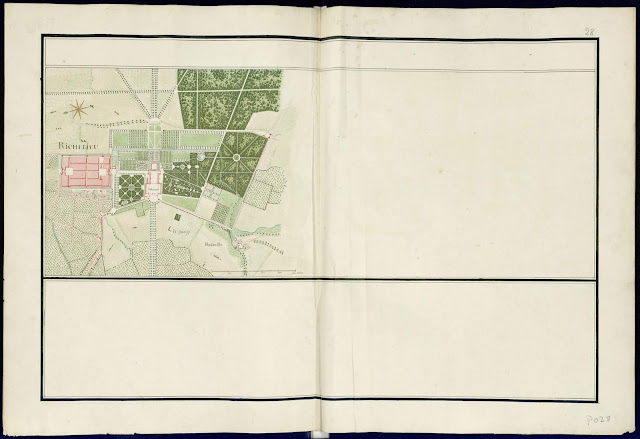 |
| The entire area of the Carte de Cassini |
Following the full cartological triangulation of France, the King's administration created the
Carte de Cassini, a standardised map version of every part of France.
 |
the cité idéale - click on the maps to enlarge
|
Started on the order of Louis XIV, the
'Carte de Cassini' or the
'Carte de l'Académie' is the oldest of the maps of France in its entirety, created at a consistent topographical scale. It is also the first map
in the world to be created on the basis of geodesic triangulation. It was measured by
Jacques Cassini de Thury (1677-1756) of the
Académie Royale des Sciences from 1683 to 1744, based on the preliminary work of his own father and grandfather.
After the publication of the 'Carte Générale' on 18 sheets at a scale of 1:870,000 in 1746/47, and now on the request of Louis XV, César-Francois Cassini (1714-1784) conceived a much more detailed map at a scale of 1:86,400 (1 line for 100 toises (194.9 m) = 2.256mm. The field work and engraving of the maps onto copper undertaken starting in 1750 were not completed until 1815. Many additions or corrections, mainly focusing on the lines of communication, were made to the engraving plates between 1798 and 1812.
During the summer of 1756, Cassini presents the sheet Beauvais 2 to Louis XV. The king admires the precision, but the announces to the cartographer that the Royal Treasury can not help the company any further.
Financial support, essential to the continuation of the work of the Cassini, is provided by a new Association of fifty members, which include the King, Queen and the Cassini family. This Association covers 20% of expenditures. Sales of sheets, subscriptions, and participation of the Généralités and contracts with the Pays d'États allow Cassini to keep the balance of accounts. Along with the publication of the map sheets of the Carte Générale, contributions from provincial expenditures (38%) lead to the publication of special maps of the Languedoc, Burgundy, Bresse and Provence.
In 1793, the revolutionary Convention nationale vote the transfer of the 165 sheets completed to the Depôt de la Guerre. They become an important mechanism for the cutting of France into the new system of départéments.
The map making company of Jaques' son, César-François Cassini de Thury, was continued in 1815 by his son Jean-Dominique, Comte de Cassini (1748-1845).
The Cassini map consists of a collection of 180 sheets, 154 in the format 104 cm x 73 cm and 26 sheets of various other sizes. The copper plates are kept by the National Geographic Institute (IGN) that administrate and publish the print-outs in black and white.
The four corners of each sheet mark the distances in toises to the Meridian of Paris and its Perpendicular.
At a scale of 1:86,400 and
toise worth 1.949 metres, the size of the field of each map is 77,961 x 48,726 metres (in Cassini projection) for a full sheet.
 |
| round and about Richelieu |
 |
| the Chinonnais, the Indre and the Loire |
***























